South India’s 4,000-year-old history has witnessed the rise and fall of various powerful dynasties including the Pallavas, Cholas, Cheras and Hoysalas. Many of these rulers built elaborate temples that were not only centers of worship but more often than not , they were the nucleus of all activities around which settlements grew. There were also centers of art, craft and trade.
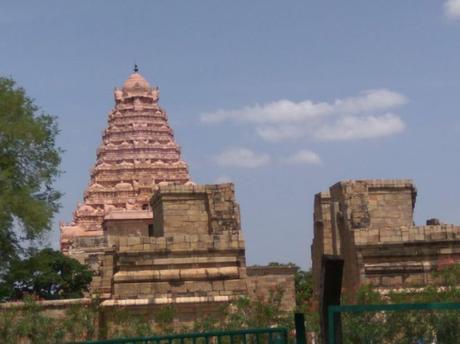 Temple built by the Cholas
Temple built by the Cholas
Hoysalas
One of the golden periods of Karnataka’s history is recorded under the powerful Hoysala dynasty who ruled the region for over three centuries until the mid 14th century. Great patrons of art, literature and religion, they built a number of magnificent temples during their reign. With a distinctive architectural style that is considered to be a branch of the Western Chalukyan school, their temples are characterized by superior craftsmanship and ornate carvings. Also known as the Karnataka Dravida style of architecture, the temples have a highly decorated ‘vimana’ or tower above the temple shrine. Largely built using soap stone (Chlorite Schist) that is easy to chisel, the temples are marked by a plethora of carvings related to mythology and the Ramayana and Mahabharata. Among the Hoysala temples of Karnataka, the temples of Belur and Halebid are by far the most majestic and resplendent of all.
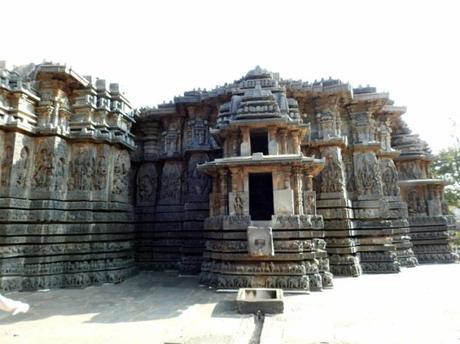
Hoysaleswara temple of Halebid
Halebid which literally means ‘old city’ was once the ancient capital of the Hoysalas and dates back to the 11th century. Earlier known as Dwarasamudra, Halebid is located about 31 km from Hassan. The town that was annexed and destroyed by the forces of Delhi Sultanate in the 14th century is synonymous with the renowned Hoysaleswara temple.
Dedicated to Lord Shiva, this is the largest and most beautiful temple of the Hoysalas. The construction of this masterpiece was started in 1121, by Ketumalla who was one of the officials of the Hoysala ruler, Vishnuvardhana Hoysaleswara. Completed in 1207, the artistic majesty and magnificence of this temple compares to none other. The complex consists of two identical temples, one on the Southern side dedicated to Hoysaleswara (the king) and the northern one, dedicated to Shantaleswara (named after Shantala Devi, the queen of King Vishnuvardhana).
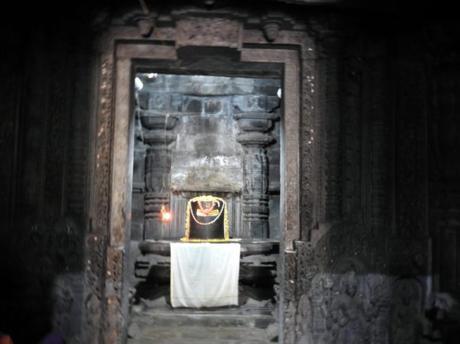
Both sanctums have the typical Hoysala star-shaped ground plan and are set on an elevated platform. The two temple halls are connected by a pillared verandah and each of them has its own set of navranga, sukhanasi and Nandi mandapas.
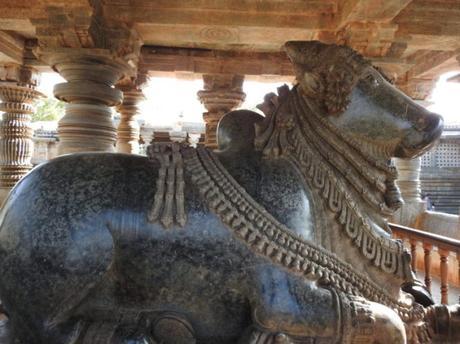
The temple has four entrances and the shrines of both sanctums are an east facing Lingam, preceded by a Nandi mandapa and a huge statue of the holy bull or Nandi. The interiors of the temple have some ornately decorated pillars while the other pillars are lathe turned. Earlier the carved pillars were adorned with splendid figures of Madanikas or the celestial nymphs but most of them barring one is destroyed now.
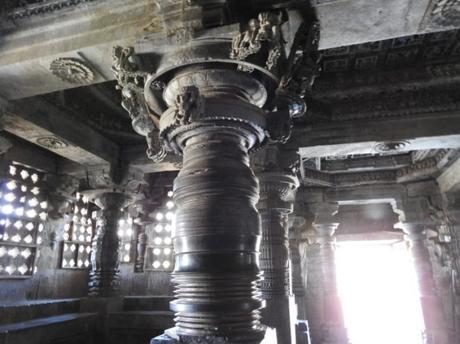
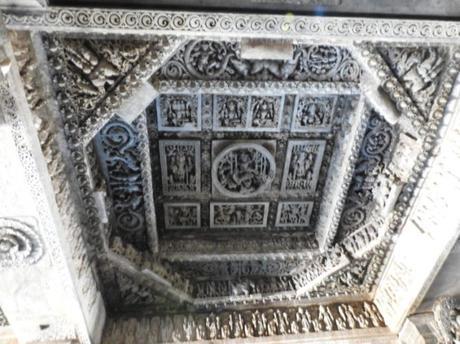
The highlight of the temple is the innumerable, detailed carvings that adorn the outer walls. Starting with the elaborate figure of the dancing Ganesha at the entrance, there are scenes from other mythological stories.
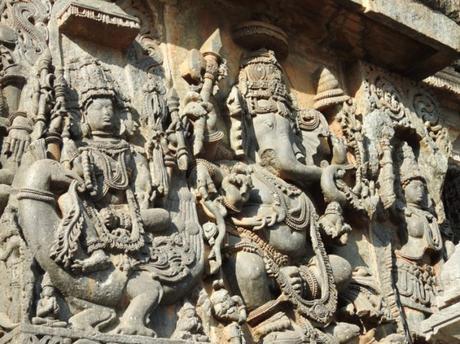
The sculptures are organised as horizontal and vertical friezes that create a magical picture of light and shade. The lower most portion consists of richly decorated elephants, followed by lions and then horses, which is a symbol of the strong foundation for the structure. This is followed by mythical beasts, swans and the top portion, which has some of the most exquisite figures of Hindu deities.
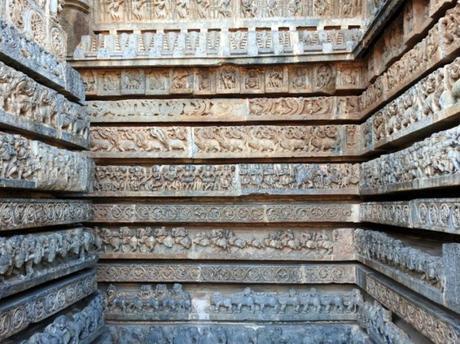
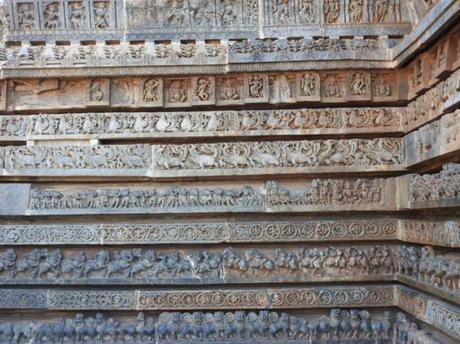
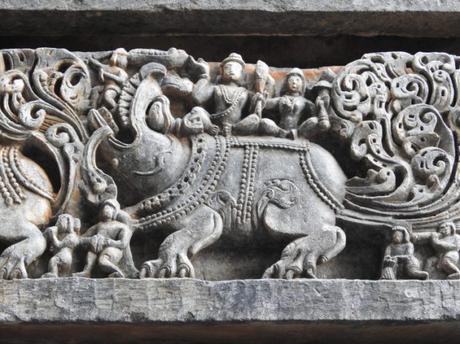
Another key feature of the temple sculpture is the elaborate panels depicting several legends like Lord Krishna lifting the Govardhana mountain, Lord Shiva dancing as Nataraja and scenes of Krishna and Arjuna from the Bhagwad Gita.
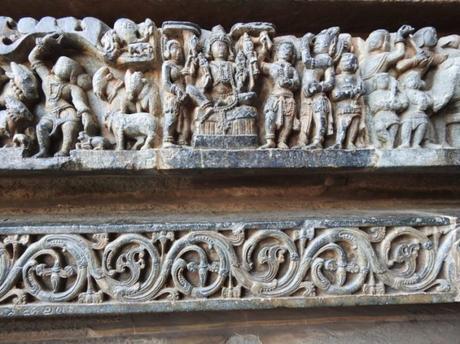
Chennakeshava Temple of Belur
About 40 km from the town of Hassan is Belur, located on the banks of the Yagachi river. It was the capital of the Hoysalas after Halebid was destroyed. The town is famous for the Chennakeshava temple that is dedicated to Lord Vishnu. Built over a whopping 103 years, this is again a huge temple complex with high walls, containing the garbha griha (or sanctum sanctorum), a sukhanasi (vestibule) and a navaranga mandapa.
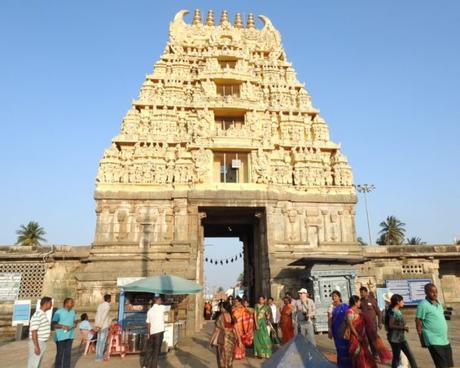
The construction was started by King Vishnuvardhana to celebrate the victory of the Hoysalas over the Cholas in the battle of Talakad. It was later completed by his grandson. There are two gateways to the temple, one of which has a striking tower or gopuram. Right in the middle of the temple courtyard is a huge 42m high pillar which is mounted on a star-shaped platform that is called the gravity pillar.
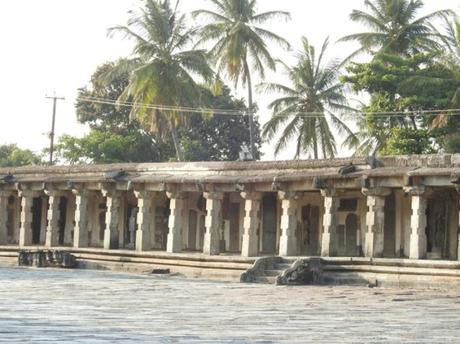
The main deity, originally called Vijayanarayana, is 6 feet high and is flanked by the idols of his consorts, Bhu Devi and Sri Devi, the goddesses of Earth and Prosperity, respectively. The Navaranga Mandapam has some splendid pillars and an exquisite ceiling. The most important pillars are the Mohini Pillar on the southwest and the Narasimha pillar to the southeast. Decorated in detail with minute carvings, the latter was known to rotate on its own axis during the earlier days. The ‘Darpana Sundari‘ or the lady with the mirror admiring herself is one of the highlights of the temple.
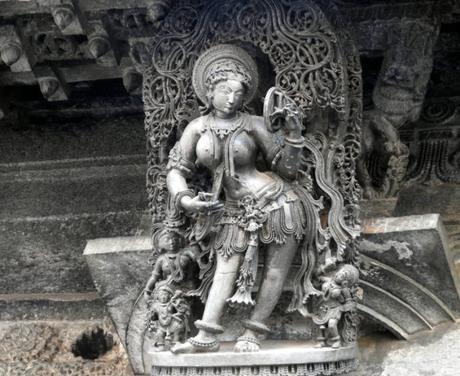
The filigree work on the panels and the exceptional craftsmanship on the ceilings are some of the highlights.
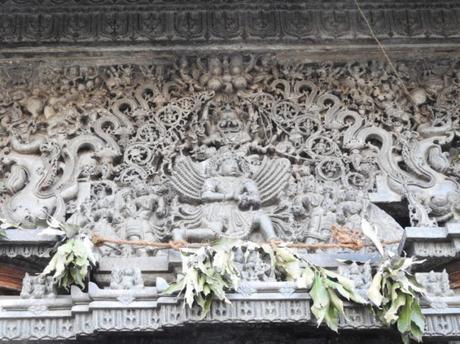
The outer walls of the temple are also adorned with friezes full of skillful carvings.
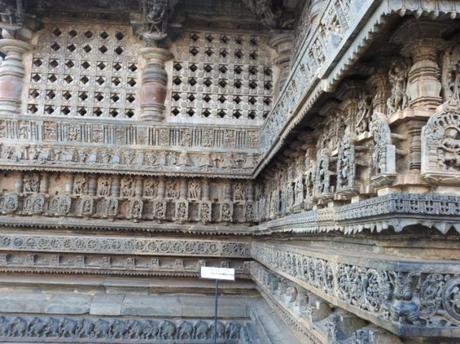
Apart from elephants, lions and scrolls of female figures on the lower portion, the higher walls have large vertical images that are truly awe inspiring.

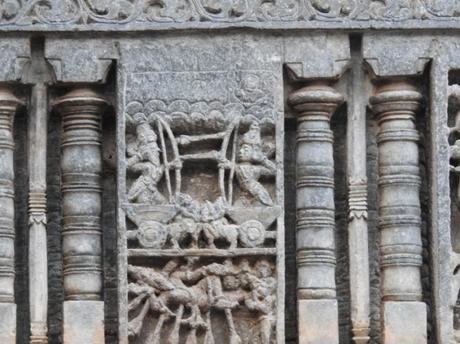
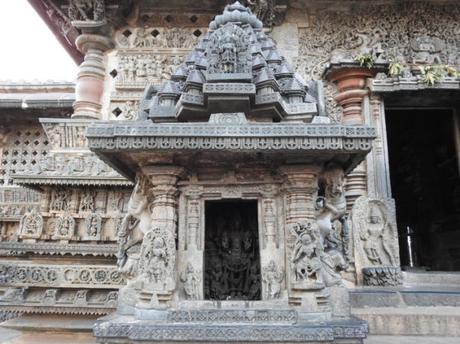
This article was originally published in Trujetter.
Belur and Halebid are easily accessible by road from Bangalore and Mysore. It is also a part of the Golden chariot tour package. Click here and here to read more about the Golden chariot.
Click here and here to read about other beautiful temples in Karnataka.
